#pyractomena
Explore tagged Tumblr posts
Text
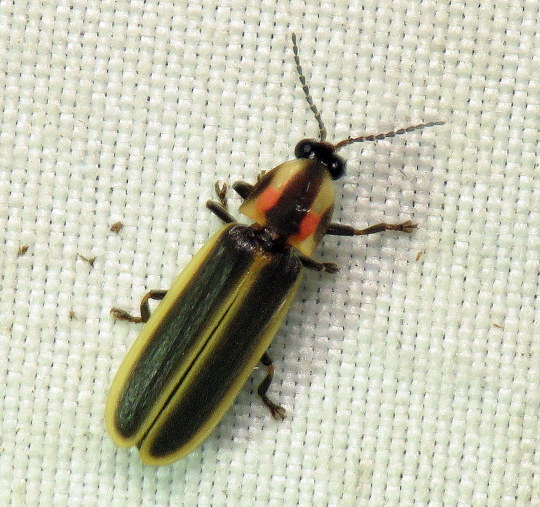
Bug of the Day
This neatly-colored firefly appears to be Pyractomena sp., not a genus I see too often. I did not get to see it light up but it was still pretty cool.
233 notes
·
View notes
Text

It’s firefly season again! 🔥🪰 / ⚡️🐞
Spring Tree-Top Flasher
“Consider the charisma of a firefly: a beetle that makes no one cringe, that we chase after with jars, a thing that glows. Consider that a firefly is a firefly for only two weeks. That before it is a firefly, it crawls through the dark for a year, wingless. It eats and eats. It tunnels through leaf litter, lethal and glowing. With its mandible it pierces slugs, earthworms, and snails, paralyzing them with venom. It glows so as not to be eaten. It molts out of its exoskeleton and grows bigger.
We assume fireflies will always be here for us, a ritual that carries children through summer dusks. But are our lawns too short, our nights too bright with artificial light? By the time we see them, fireflies have spent a winter underground and have emerged, frenzied to mate, into a confusing world that is not dark enough. They do not eat. Singleminded, they lack even mouthparts. They try to make the brightest flash.” - Kateri Kosek
#spring tree-top flasher#treetop flasher#tree-top flasher#fire fly#firefly#lightning bug#illustration#jada fitch#art#drawing#watercolor#painting#nature#book#forest revealed#Pyractomena borealis#bug#insect#entomology#springtime#bug art#insect illustration#naturalist#Maine artist#Maine#illustrator#Maine illustrator#nature illustration#book illustration
74 notes
·
View notes
Text




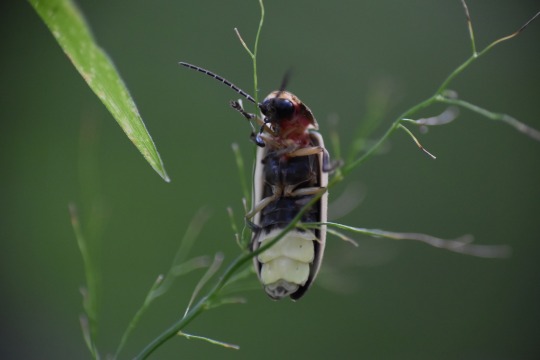
Common Eastern Fireflies (Photinus pyralis), taken June 16, 2025, in Georgia, US
Firefly season is now in full swing here! Every night at dusk, fireflies begin flashing in the hundreds. Depending on the location they flash and the time of night, you can usually tell what kinds are flashing. P. pyralis is usually the first to begin, staying low to the ground and flashing every few seconds, followed later by other, smaller Photinus species who fly a little higher. My favorite to watch are the Spring Tree-Top Flashers (Pyractomena borealis) which, as their name suggests, flash up in the tree canopy. I rarely see them during the day (as they roost in the treetops), but they're beautifully numerous at night. They hover high in the air and flash several times in quick succession, often in sync with a couple others around them. Looking up and seeing dozens of fireflies twinkling in the treetops is a wonderful sight!
#Common Eastern Firefly#Photinus pyralis#firefly#beetle#insects#invertebrates#animals#nature#wildlife#photography
729 notes
·
View notes
Text
just worked out all of the hybrid species for rust because i felt like it (and I'm in the middle of writing about morphing day. idk if I'll even mention half of these but idc). took me an hour. anyways.
they're all under the cut
Phil - Carrion crow European, dark feathers, wikipediea had "passerine" in the first sentence and I thought it was kinda funny
Baghera - Gadwall I believe it exists in Switzerland (that's how I found it, at least--searching for swiss ducks, though this one isn't from there I don't think), the feathers on females are REALLY cool and yellow-ish
Cellbit - Brazilian Shorthair Had a list of cat breeds and their origins, ctrl+f for 'Brazil,' this was the only one. Saw the color pallet and went "yeah." The eyes are lowkey really fitting, he would wouldn't he
Bagi - Brazilian Shorthair Still works, I'd guess the siblings are the same breed
Tina - Thai Lilac Accidentally drew her with white ears for a chapter cover. Korats don't have white fur, but a lilac does. The first lilac was born from two korat parents, so it all worked out in the end
Mariana - White/Angel Tern Didn't even know they were also called Angel Terns until I started looking into them for this chapter tbh, I just needed a bird with white wings and the babies were cute. Terns are cool, I've been learning a lot about them for chapter 4
Sunny - Pyractomena Is firefly. idk how insect-people exist but whatever. I want her to glow
Roier - Mexican Flame-Knee Spider Not only is the name sick asf, so is the appearance. Goes with his color pallet really well
Jaiden - Conure Yeah its just Ari idk man
Quackity - Call Duck It starts out yellow, let's just say the feathers take a while to develop for him. The origins of this duck's name are what convinced me to make him this breed, especially for this fic
Rivers - Swedish Yellow I said she had yellow feathers chapter one so I had to find a yellow duck, whoops
Niki - Maine Coon Very popular cat breed in Germany, referred to as "gentle giants," they look awesome and fluffy so thumbs up
#kyec#kyec rust#<- i should probably turn this into a tag lmao#infodump#ao3#fanfic#fanfiction#qsmp fanfiction#qsmp#im tempted to tag each character but also i dont want to do that#k bye
4 notes
·
View notes
Text
Might as well join the "Sprunki Species headcanon" trend!!
Oren: Pyractomena Lucifera Firefly
Raddy: Fire Dragon
Clukr: Japanese Rhinoceros Beetle
Fun Bot: Robot, resembles a ghost ant
Vineria: Island Apple Snail
Gray: Chartreux Cat/Grey Long-Eared Bat/Demon hybrid
Brud: Unicorn/Northern short-tailed shrew hybrid
Garnold: Western honeybee/Large earth bumblebee hybrid
OWAKCX: Desert Hedgehog
Sky: Spirit Bear
Mr. Sun: Star-like elemental being
Durple: Water Dragon
Mr. Tree: Tree-like elemental being
Simon: Kiko Goat/Golden Guersney Goat mix
Tunner: Pangolin-Jackrabbit hybrid
Mr. Fun Computer: AI residing in a computer
Wenda: Turkish Angora Cat
Pinki: Flemish Giant Rabbit/Wolpentinger hybrid
Jevin: Jacobs Sheep
Black: Demon
5 notes
·
View notes
Text
Photuris is a genus of fireflies (beetles of the family Lampyridae). These are the femme fatale lightning bugs of North America. This common name refers to a behavior of the adult females of these predatory beetles; they engage in aggressive mimicry, imitating the light signals of other firefly species' females to attract, kill, and eat the males. Their flashing bioluminescent signals seem to have evolved independently and eventually adapted to those of their prey, mainly unrelated Lampyrinae, such as Photinus (rover fireflies) or Pyractomena.[1]
10 notes
·
View notes
Text
Pyractomena borealis
Common Name: Spring Tree-Top Flasher

me when someone who has been nice to me every single time we've interacted is nice to me:

omg... you dont hate me?....
33K notes
·
View notes
Text
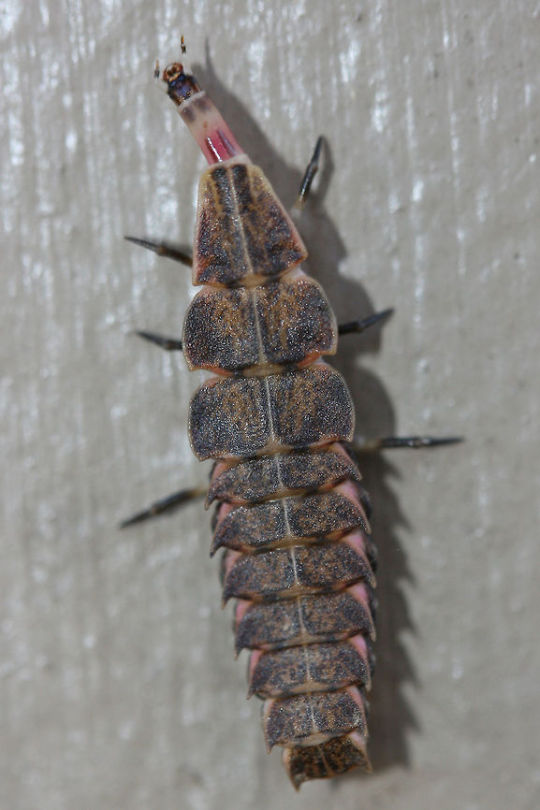
Pyractomena borealis larva
1 note
·
View note
Text
Forms of the Bean - Masterpost 2
Continued list of all my different forms/sonas. Does not (usually) include mixed/blended forms.
Slime
Reptilian Centaur
Ink Cap Mushroom (Coprinopsis atramentaria)
Anthro Spider (based on Muffet from Undertale | Bold Jumping Spider)
Bold Jumping Spider (Phidippus audax)
Striped Skunk (Mephitis mephitis)
Common Raccoon (Procyon lotor)
Opossum (Didelphis marsupialis)
Bee
Void (based on Minecraft, lol)
Chocolate Ferret (Mustela furo)
Brown Rat (Rattus norvegicus)
Otter
Purple Skimmer Dragonfly (Libellula jesseana)
Squirrel
Japanese Giant Flying Squirrel (Petaurista leucogenys)
Raven (Corvus corax)
Anna’s Hummingbird (Calypte anna)
Axolotl (Ambystoma mexicanum)
Arachnecentaur (Bold Jumping Spider Centaur)
Backrooms Entity
Snowflake Obsidian
Lava/Magma
Lightning Bug/Firefly - a general, all-encompassing thing (closest term I can think of is cladotherian but I'm not Therian so that term doesn't work) with an appearance closest to a keel-necked firefly (Pyractomena ecostata)
Potato Bug (Armadillidium vulgare)
Moss (Clado-nonhuman)
Cordyceps (Clado-nonhuman)
Sunflower (Helianthus annuus)
Poppy Playtime GrabPack thingie (I don't have a good name for this yet)
Western Brackenfern (Pteridium aquilinum)
Masterpost pt3
#alterhuman#nonhuman#nonhumanity#alterhumanity#masterpost#forms of the bean masterpost(s)#eldritch#shapeshifter#eldritch shapeshifter#eldritchbean#physically nonhuman#physical nonhuman#physical alterhuman
0 notes
Photo
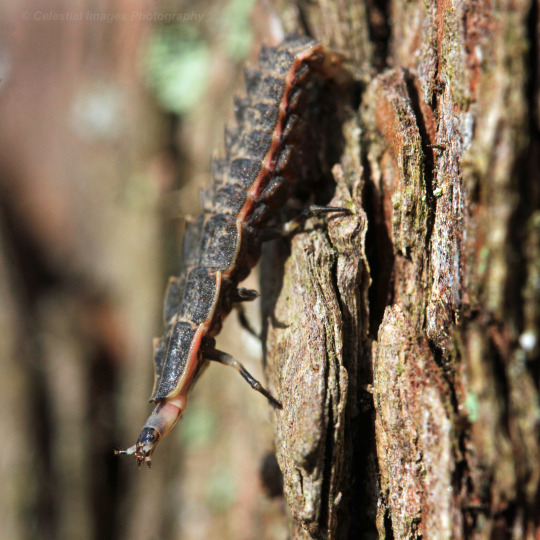
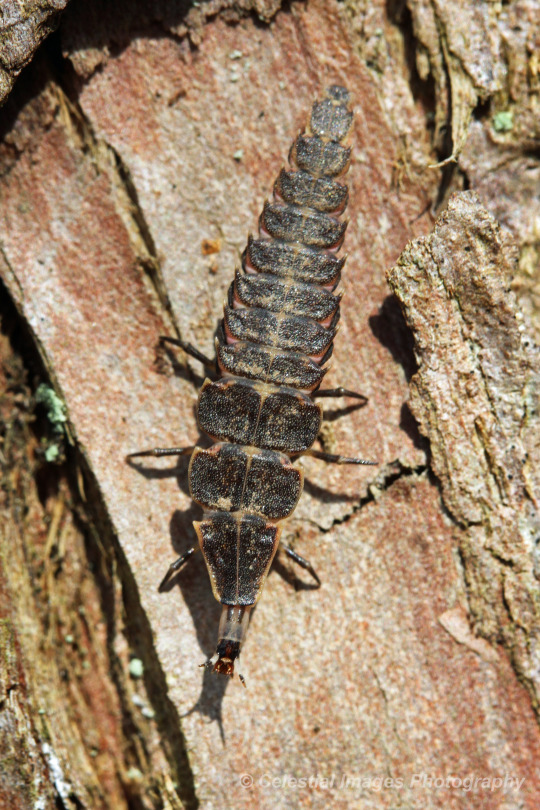
This prehistoric looking thing is a baby firefly (aka lightning bug)
Firefly beetle larva (Pyractomena sp.) on bald cypress
March 9, 2021
Southeastern Pennsylvania
#not a fly or true bug#bug#bugs#photographers on tumblr#beetle#beetles#firefly#lightning bug#Pyractomena#entomology#bugblr#Coleoptera
156 notes
·
View notes
Note
The top one is definitely a firefly beetle! So is the second one, as you said. Looks like a larva in the genus Pyractomena. Females in that genus are not larviform, if I recall, but there are definitely lots of species that do have larviform females!
Thought you might appreciate this little dude, I always forget what they're called but they're chill :]
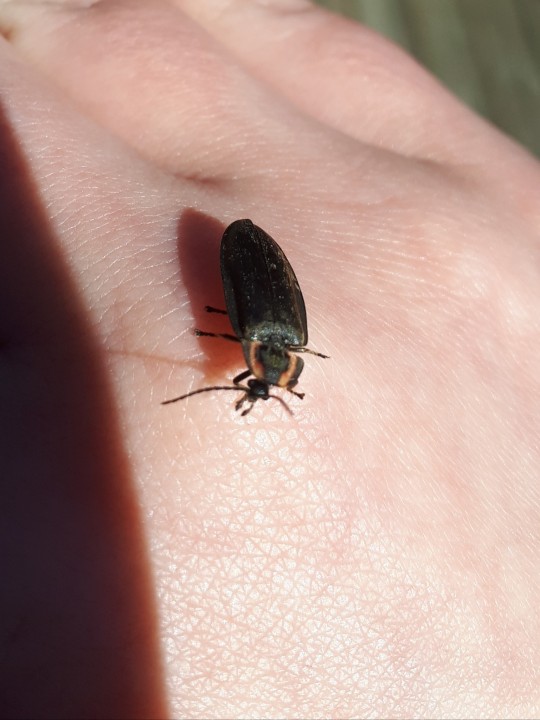
Looks like a firefly or something closely related! I saw one in vermont last fall, some females look like crazy carboniferous monstrosities and I love them.
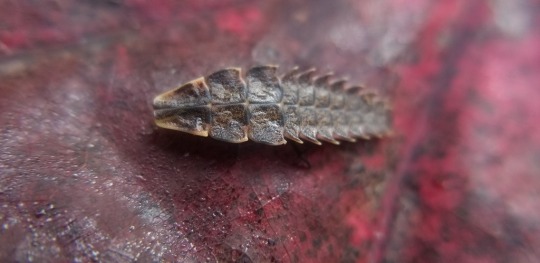
363 notes
·
View notes
Photo
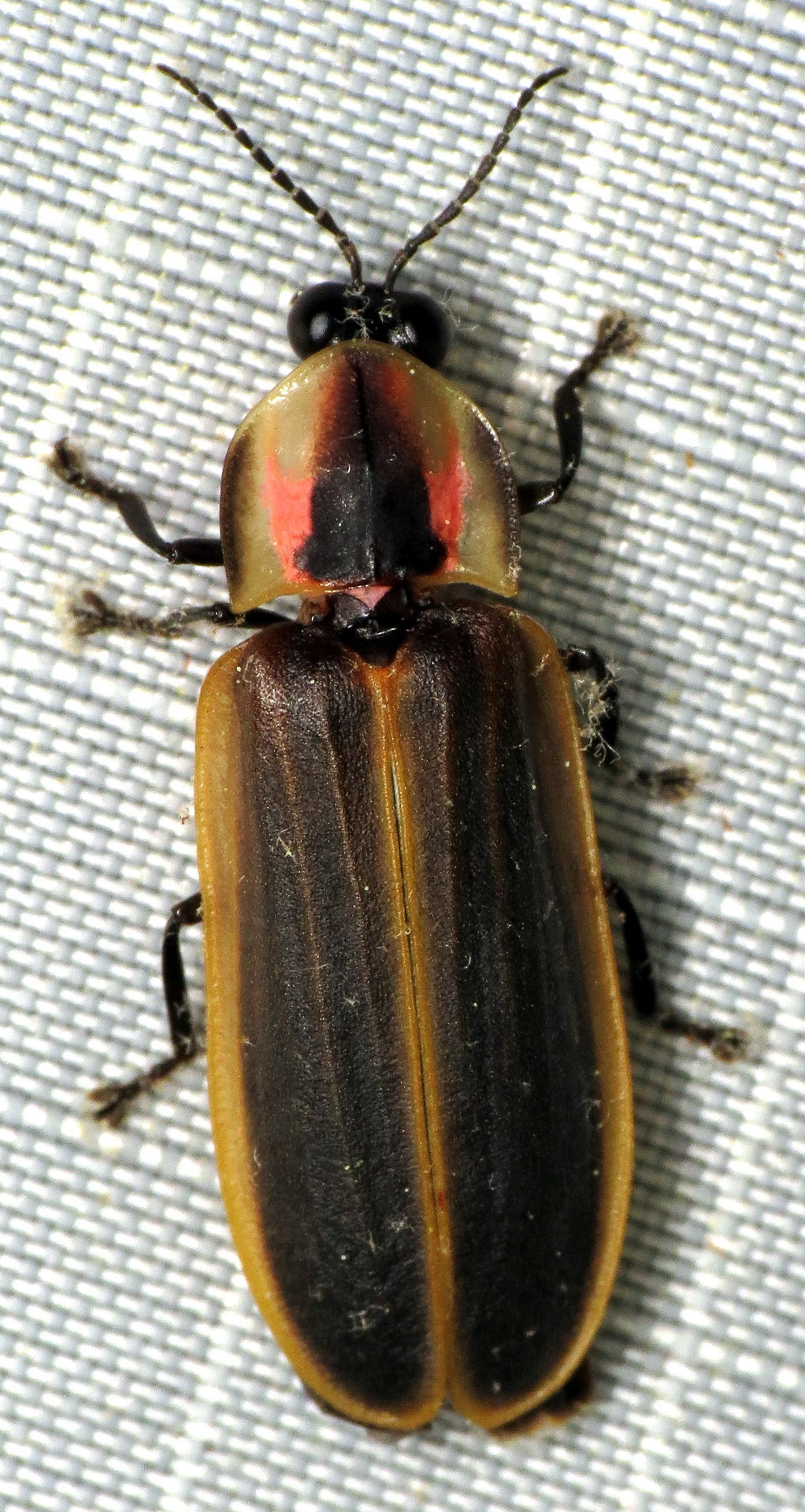
Bug of the Day
A firefly (Pyractomena sp.) at the UV light last week. I love the salmon-colored markings on the pronotum.
Thanks to v. below at bugguide.net for the id!
211 notes
·
View notes
Text
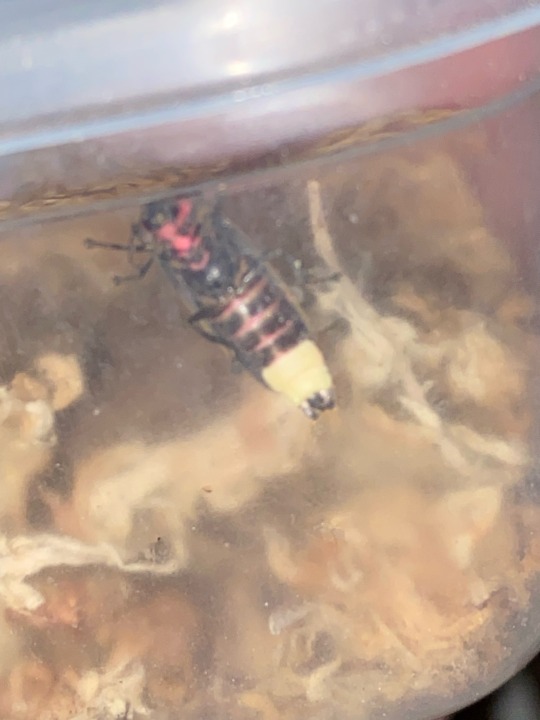
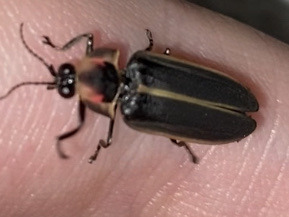
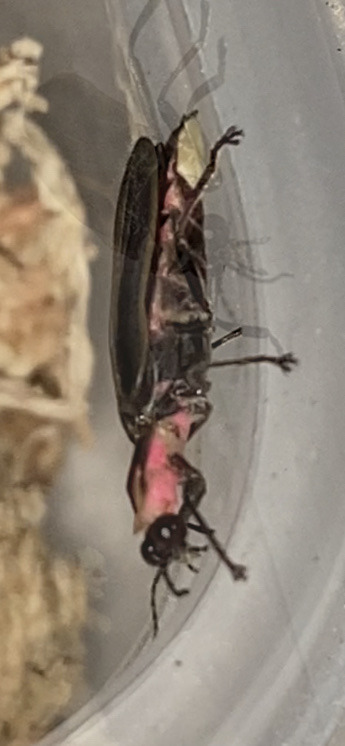
Firefly I’ve been raising is all grown up!!
#spw talks#Pyractomena borealis#firefly#beetle#HES SO CUTE…#I’m seeing if he’ll like sugar water or beetle jelly before I try out live prey with him#bug#pet pics
1 note
·
View note
Text
TW: Mentions and imagery of bugs/insects
You know how moths are attracted by light? And fire flies produce their own light?
Moth!Izuku:
A lonely Luna moth that has been flying around alone until he sees some flashing lights around him, but one stands out as the brightest he has ever seen.

Firefly!Katsuki:
A Pyractomena firefly that flashes a yellow-amber light similar to the sparks of a campfire, but unlike the other males from his group that are attracting mates, Katsuki hasn't gotten the same luck, might be because his light is the only one with his color, so he's the odd one out and undesired by other members of the species, until he sees a huge pair of wings that seem to reflect the glow of the moon, thus, he and Izuku meet.

Izuku tells Kacchan he loves his light and the blonde says the same about his wings, the two go to a lower part of the patch of grass where the fireflies are and the two become mates, they live in a small home in a tree stump and have adopted a number of orphaned baby bugs they found around their territory.
8 notes
·
View notes
Text
Fourth of July and the Firefly

Although many fireworks shows are cancelled this Fourth of July, this is a great opportunity to get out over the holiday weekend and enjoy nature’s very own light show during World Firefly Day, on July 4th and 5th!
Fireflies, AKA lightning bugs, are neither flies nor bugs. They are actually a type of beetle with soft wings and the ability to bioluminesce (light up).
There’s a good chance you will see (or have already started seeing) firefly light displays this summer. There are six genera of fireflies that you are likely to encounter in Pennsylvania. Three are diurnal and don’t light up as adults (Ellychnia, Pyropyga, and Lucidota). Their light organs are absent or reduced in the adult stage. The remaining three genera are nocturnal and use light displays as adults. One is Pyractomena, which is a spring-active firefly that has already finished displaying for the year. That leaves Photinus and Photuris as the hosts of nature’s fireworks this Fourth of July. If you pay close attention to the flash patterns you’re seeing in your yard or get a chance to see one up close, you’ll probably be able to tell which one it is!
Photinus fireflies (top) are flattened in appearance and their heads are usually concealed from above, whereas Photuris fireflies (bottom) are hump-backed and you can often see their heads from above.


Creative Commons © David Cappaert, Bugwood.org
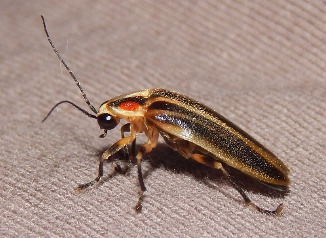
Photo credit: Andrea Kautz
Flash patterns vary by species, as do the timing and location of the display. Some species display low to the ground, while others display high in trees. Some are active at dusk, and others after dark. The most common firefly in the eastern U.S. is Photinus pyralis which has a lazy J-shaped flash pattern. Other flash patterns you may have seen are single or multiple rapid blinks. The displays you see are male fireflies advertising to females, who respond inconspicuously with their own flash pattern from a lower perched position. Some “femme fatales” in the genus Photuris will actually hunt by flashing in response to males of other species to lure them in, and then eat them!
Speaking of hunting, firefly larvae (below) are predators that live in moist soils, feeding on slugs and snails, which is a great method of pest control! Adults of some species are predators, but others drink nectar from flowers or simply do not eat at all.

Creative Commons © 2019 Ken Childs
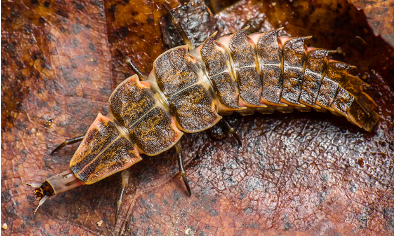
Creative Commons © 2012 Derek Hauffe
The light-producing behavior has its origins in the larvae, which use the glow as a warning to predators that they are toxic. Other animals use bright colors to achieve this, but this wouldn’t be effective for nocturnal species in darkness. Adult fireflies light up to warn predators, but also to communicate with members of their own species, specifically potential mates. The distress signal is different from the mating signal, which you may notice if you capture a firefly in your hand and it starts to blink repeatedly.
We hope you get a chance to celebrate both the Fourth of July and World Firefly Day this year by witnessing some natural firework displays in your own back yard! We encourage you to share your experiences on the Fireflyers International Network Facebook page.
Andrea Kautz is a Research Entomologist at Carnegie Museum of Natural History’s Powdermill Nature Reserve. Museum employees are encouraged to blog about their unique experiences and knowledge gained from working at the museum.
#Carnegie Museum of Natural History#Firefly#World Firefly Day#Bugs#Lightning bugs#Beetles#bioluminescence
23 notes
·
View notes
Photo
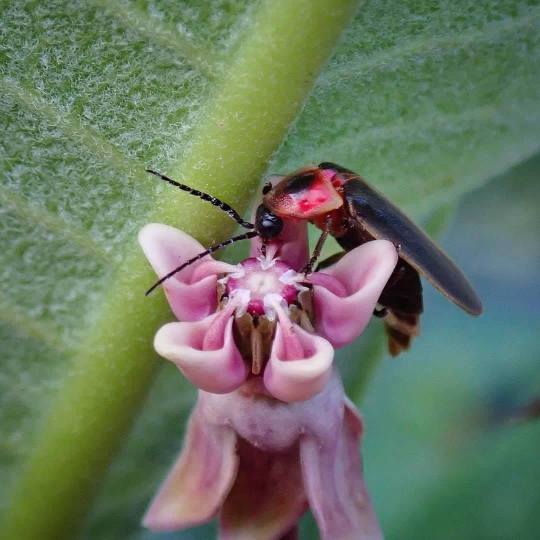
The Occurrence and Behaviors of North American Fireflies (Coleoptera: Lampyridae) on Milkweed, Asclepias syriaca L.
Lynn Faust and Hugh Faust
At four sites spanning a general triangle with 50–100 km legs in East Tennessee over a six-week period in July and August 2013, 56 fireflies, male and female, from four species and three genera were associated with common milkweed, Asclepias syriaca L. Photinus pyralis (L.), Photinus cooki Green, Pyropyga minuta LeConte, and an determined species of Photuris Dejean repeatedly exhibited seven common behaviors of nectaring from individual blooms and stigmatic slits and actively mouthing floral stems, recurved sepals, and uppermost leaves, lasting from 9–175 minutes.
Milkweed pollinia were noted on three of the four species. Maximum firefly presence was observed the first two survey days, 7 and 8 July, falling to low but persistent numbers the remainder of the survey. These firefly behaviors were observed primarily in the four hours before sunset and after sunrise.
Twelve Photuris larvae were observed feeding on milkweed rhizomes in captivity. Reports of milkweed-firefly associations involving at least four additional firefly species in two additional genera, Lucidota atra (Olivier), Photinus indictus (LeConte), Pyropyga decipiens (Harris) and a species of Pyractomena Melsheimer spanning 90 years across the eastern US are presented along with recent reports of similar behaviors witnessed from Texas to Canada.
via: https://bioone.org/journals/The-Coleopterists-Bulletin/volume-68/issue-2/0010-065X-68.2.283/The-Occurrence-and-Behaviors-of-North-American-Fireflies-Coleoptera/10.1649/0010-065X-68.2.283.short?fbclid=IwAR0YlEE1D9BKwl7zG9p_bpSlYcigf8p84btPGVKQAdArxue1dGawUAJJGj0
#entomology#insect#pollinators#beetle#firefly#nature#ecology#science#north america#plants#botany#milkweed#flowers#wildflowers
10 notes
·
View notes